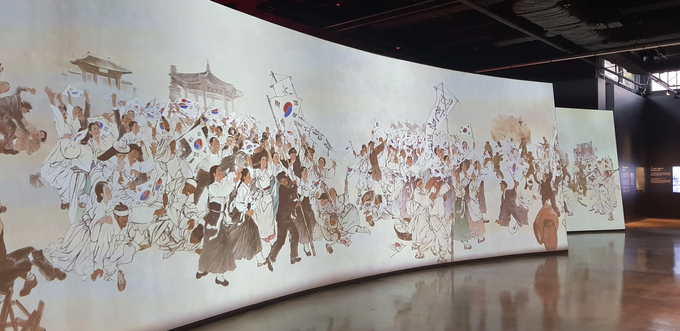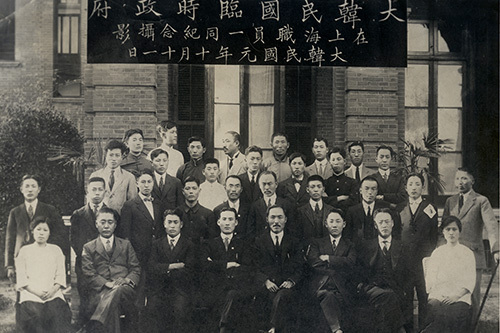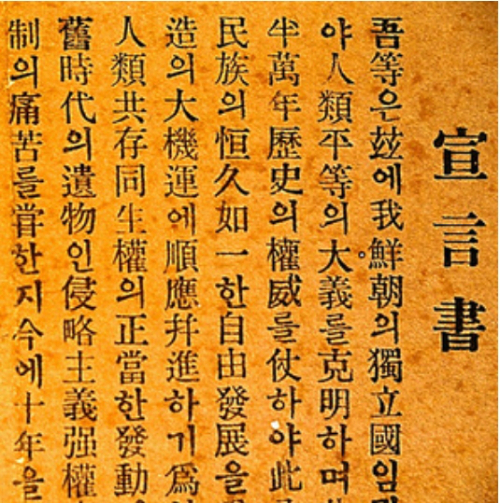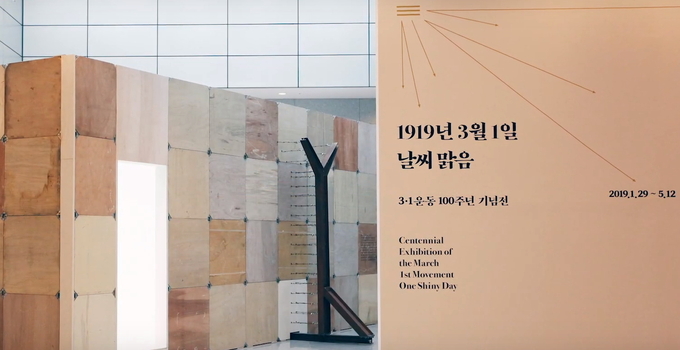
If foreigners ask Korean people what the saddest moment in Korean history is, they will all say the Japanese colonial era. Koreans were shorn of their freedom by Japan in 1910 and held hostage until 1945. Japan brutally ruled Korea during this period, and Korean people repeatedly tried to reclaim their nation. There were many attempts to overthrow the Japanese occupiers, but the most popular one was the ‘March 1 Movement’ which started March 1, 1919. The March 1 Movement played an important role in the efforts for the independence of Korea. As the result, March 1 is one of the most popular holidays in Korea now, and this year, 2019, is the 100th anniversary of the March 1 Movement.
From the beginning of the occupation, Korean people tried to do many things to regain national sovereignty, but they always failed. The Japanese had better weapons (guns), a more powerful military and control of the government. Then, before the Paris Peace Conference at the end of World War I in 1918, Korean Emperor Gojong died suddenly. Korean students decided that it was a great time to announce Koreans’ will for independence both internally and externally. Korean students in Japan announced the Declaration of Independence on February 8 in Tokyo, Japan.
After that, Seoul was imbued with a desire for Korean independence on March 1, which quickly spread to the seven northern regions, currently North Korea. The movement spread fast, far and wide throughout the country. During late March to early April, there were protest marches every day for about 60 days. It was the apotheosis of the movement. Everything was spontaneous. Without distinction of sex, age, wealth or status, all Korean people participated in the movement for their nation and their freedom. Yu Gwan-soon was one of the most famous independence fighters who participated in the March 1 Movement. When Korean people think of the March 1 Movement, she is the first person that comes to mind. She was 16 years old at that time and died in prison from torture. According to government records, the youngest protester was a boy who died when he was only 12 years old. There are also word-of-mouth stories of a nine-year-old girl who died protesting, but there aren’t official records of her. You can read her story at the Independence Hall of Korea. These stories show Koreans dedication to independence regardless of age or sex.

The Provisional Government of the Republic of Korea was established by Korean independence fighters in Shanghai, China, in 1919. After the March 1 Movement, the circle of fighters with Shanghai as the center organized the Provisional Assembly and formed the Provisional Government of the Republic of Korea in proper form on April 11. The government had inaugurated diverse independence movements, so it was always moving cities to avoid Japanese surveillance. Despite the many difficulties, it was the only organization in continuous operation until independence in 1945.

Something special was discovered last year by chance that was announced to the public on March 1 this year: the first printing of the Korean Declaration of Independence. It was found in Japan just before last March. Most declarations were confiscated and destroyed by military police at that time. That’s why there are only eight remaining copies including the original in Korean museums. According to The Asahi Shimbun report about the first printing, a Japanese man who managed a pottery store in Pyeongyang supposedly smuggled it out of Korea to Japan somehow evading police surveillance.
Two other treasures from this period have recently been brought back to life. Two songs sung by the seven women independence fighters who were confined to Cell No.8 of Seodaemun Prison, including Yu Gwan-soon, were lost. The lyrics survived thanks to the records kept by the descendants of these women, but the music was lost. Thus, two Korean composers made new music to accompany the lyrics, and the new songs are an inspiration to a new generation of Koreans. The title of this article, Korea Is Still Alive, is the chorus of both songs but set to different music. The new songs are called “A Prayer” and “Women’s March.”
The other special items are some photos of Japanese military sexual slavery. The ones published these days are the originals not copies. Previously, we could only see copies of the original photos taken by an American soldier through the National Archives and Records Administration. Fortunately, the Seoul city administration and a Seoul National University research team have been maintaining records of Japanese military sexual slavery for last three years and they brought the three original photos to Korea.

Besides these things, there are many things that have been found recently, and still many others Korean descendants have yet to find. To remember Independence Day, various exhibitions are held in lots of cities around Korea. ‘One Shiny Day’ - Centennial Exhibition of the March 1st Movement - is on display in the Daegu Art Museum until May. There you can experience the patriotic spirit directly. There’s a proverb that says, “A thousand hearings are not worth one seeing”.
Even though all participants knew the March 1 Movement, even the non-violence movement, couldn’t bring freedom and peace immediately, they never gave up. “The movement doesn’t mean that we are liberated right now, but for letting all people evoke the spirit of independence. I must participate in this movement.” Son Byong-hi, one of the independence fighters, said this just before the March 1 Movement began.
Because of this history, the relationship between Korea and Japan is still bad. Few Korean victims are still alive with the sorrow of the period. Japan still has never sincerely apologized to them. That’s why the relationship is getting worse. Japan has sent compensation to the victims of Japanese military sexual slavery before, but they didn’t accept the money because there was no apology.
The most important thing is that people never forget our history and the spirit of the March 1 Movement activists who sacrificed everything to make Korea whole again. Shin Chae-ho, one of the independence movement members and the Provisional Government’s founders said, “A nation that forgets its past has no future.”
